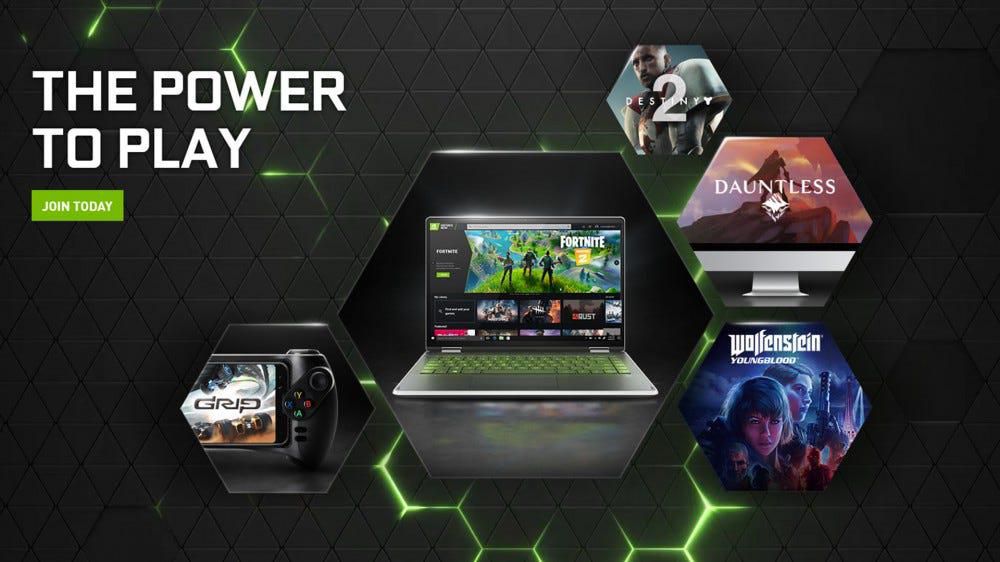[ad_1]
The latest version of Nvidia’s GeForce Now is providing the opportunity for telcos to bring … [+]
One of the most eagerly touted opportunities for 5G has been cloud-based gaming. After all, in theory, 5G networks bring with them not just faster download speeds, but quicker response times—two critical capabilities to ensure a high-quality, high-resolution gaming experience over a wireless network connection.
Unfortunately, to date, there hasn’t been much real action taking place in the 5G-specific gaming arena, but encouraging signs are starting to appear. The most recent stems from the news that Nvidia is expanding their range of partnerships for its GeForce Now cloud-based game streaming platform with several new telco industry-related companies from around the world.
Specifically, the company is adding Alliance partners in Australia (Pentanet), Turkey (Turkcell) and Saudi Arabia (Zain KSA) to their existing list of telcos and other online service providers, including Japan’s Softbank and KDDI, South Korea’s LG UPlus, Taiwan Mobile and GFN.RU in Russia. This is on top of the service that Nvidia powers via 22 of its own data centers to 30 countries throughout North America and Western Europe.
For those who may not be familiar with it, GeForce Now is a cloud-based game streaming service that lets you play a large range of PC games (over 800 from 300 different publishers) on virtually any connected device, including older PCs, Macs, Chromebooks, tablets, smart TVs, Android- and iOS-based smartphones and more. Thanks to high-powered Nvidia GPU-equipped servers, the company aims to deliver high quality (60 fps—frames per second—or better) gaming experiences on new titles even to older or lesser-equipped machines that lack the high-end GPUs and other hardware that you typically need to play those games.
Nvidia launched the GeForce Now service several years back to a limited audience of beta testers and a little less than a year ago opened it up to anyone who was interested. Along with the wide availability, the company also turned on real-time ray-tracing (a technology they call RTX) at that time, leveraging the more advanced capabilities of their gaming-focused RTX servers.
What’s interesting about these latest announcements is that they demonstrate how Nvidia is allowing telco partners to take the RTX server technology they run in their own data centers and let the carriers who are part of the GeForce Now Alliance (GFNA) run it within their own networks. It’s a classic example of an edge computing solution and, more pertinently to wireless network providers, exactly the kind of value-added service that 5G networks are supposed to be able to provide. Of course, it does require the telco partners to invest in the necessary hardware to power the service on their own networks, but it gives them the chance to build a profitable add-on service through that investment.
Not surprisingly, most of the people who have been using GeForce Now have been connecting through older PCs, typically through either wired broadband or in-home WiFi connections. As Nvidia has started working with more telcos, however, the company has been adjusting its software stack to enable smoother and more efficient gaming experiences over cellular connections and to mobile devices. Along the way they have, for example, needed to adjust some of their algorithms for jitter and data packets arriving out of order—real-world situations that can be exacerbated by cellular networks.
They’re also in the process of making adjustments to map touchscreen-based inputs to input that might come from an attached controller, allowing mobile gamers to play without needing to purchase and carry a dedicated gaming controller accessory. In addition, by leveraging WebRTC browsers, they’ve been able to bring cloud-based games to Chromebooks and, most notably, direct to iPhones—something that they were the first cloud-based gaming service to offer. (Apple’s stated App Store guidelines have pushed cloud-gaming services to the Safari browser, rather than native apps). Also, announced recently, GeForce Now is how the immensely popular Fortnite will be playable on iOS devices, through a future update.
From a 5G-specific perspective, Nvidia’s experience with its telcos partners has found an impressive 10x increase in real-world bandwidth in the GeForce Now service as its Alliance partners have switched from 4G to 5G. In addition, it’s allowed them to shoot for a target latency of just 20 msec, which can make a big difference in competitive games where milliseconds really matter. Interestingly, most of the improvements have come on non-standalone 5G networks—Nvidia expects that the move to a true 5G network core, as standalone 5G networks enable—should lead to even lower lag times.
While we’ve clearly yet to reach the highly-touted (and overhyped) goals that we were initially promised with 5G, it is encouraging to see some real-world examples of new 5G services come to pass. Gaming clearly is and will continue to be a hot segment, so it will be interesting to watch how Nvidia works to expand its GeForce Now Alliance with other telco partners and how they, in turn, can make these new opportunities work for their businesses. It will likely be the first sign of what is still to come.
Disclosure: TECHnalysis Research is a tech industry market research and consulting firm and, like all companies in that field, works with many technology vendors as clients, some of whom may be listed in this article.
[ad_2]
Source link





